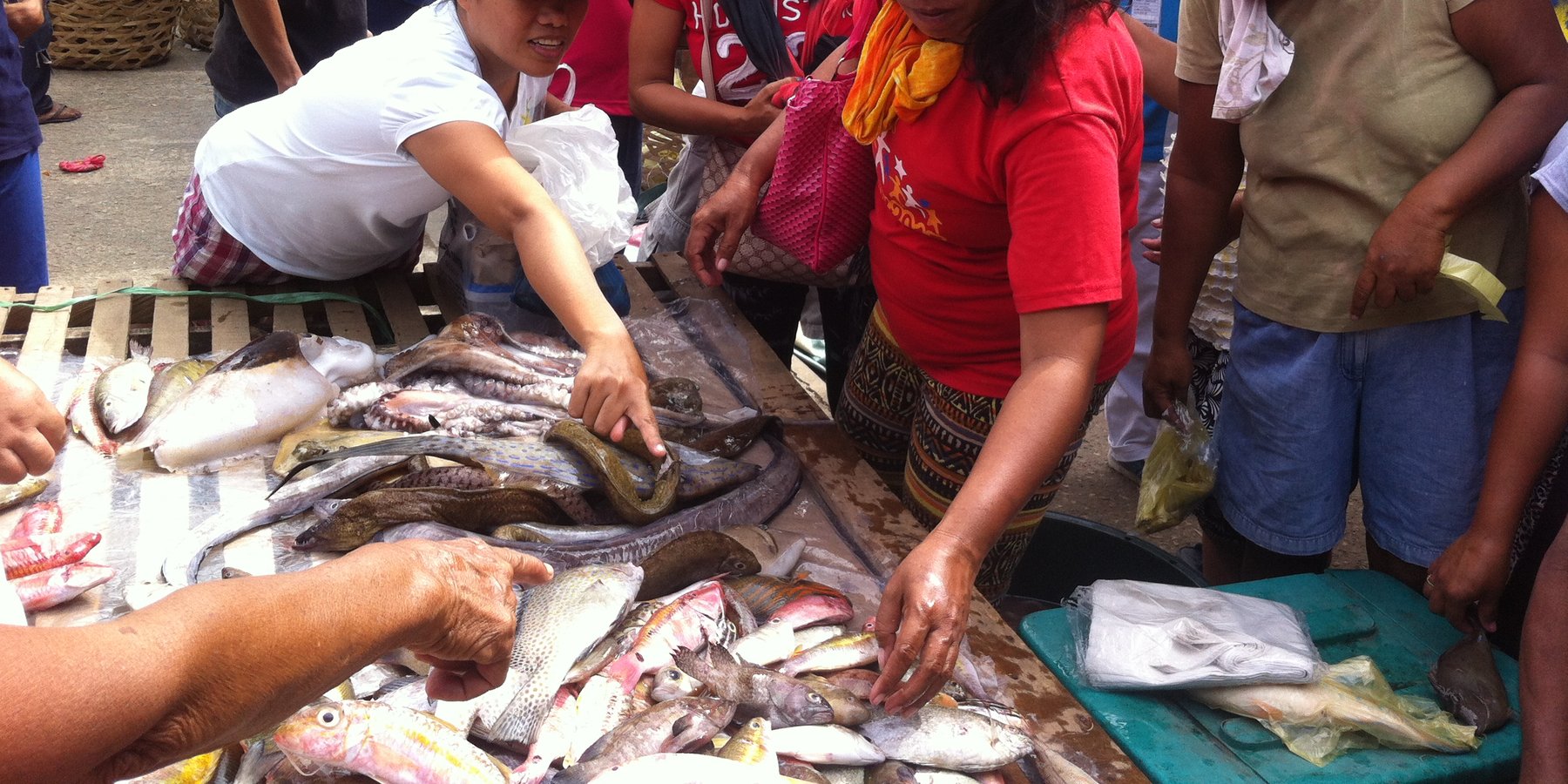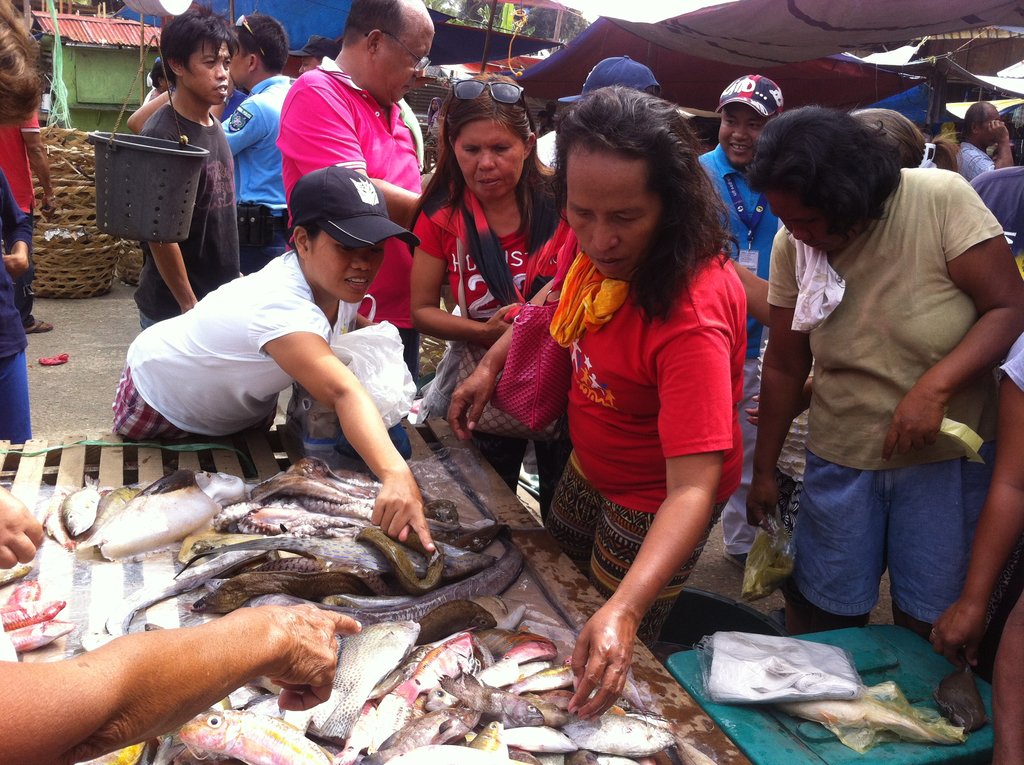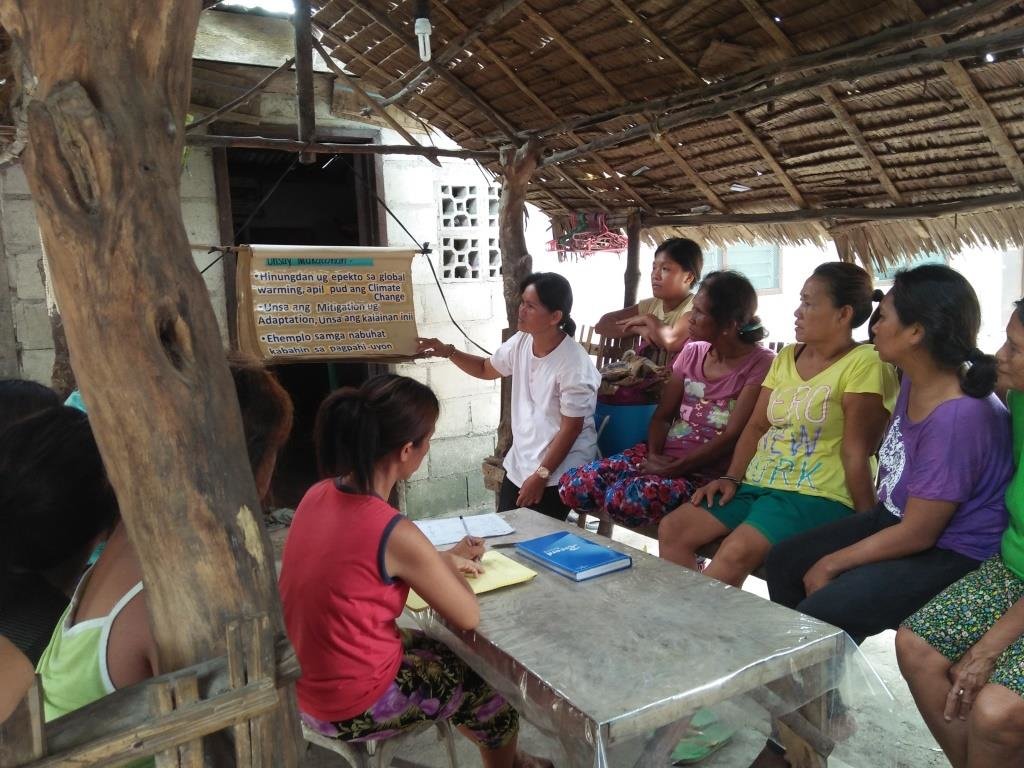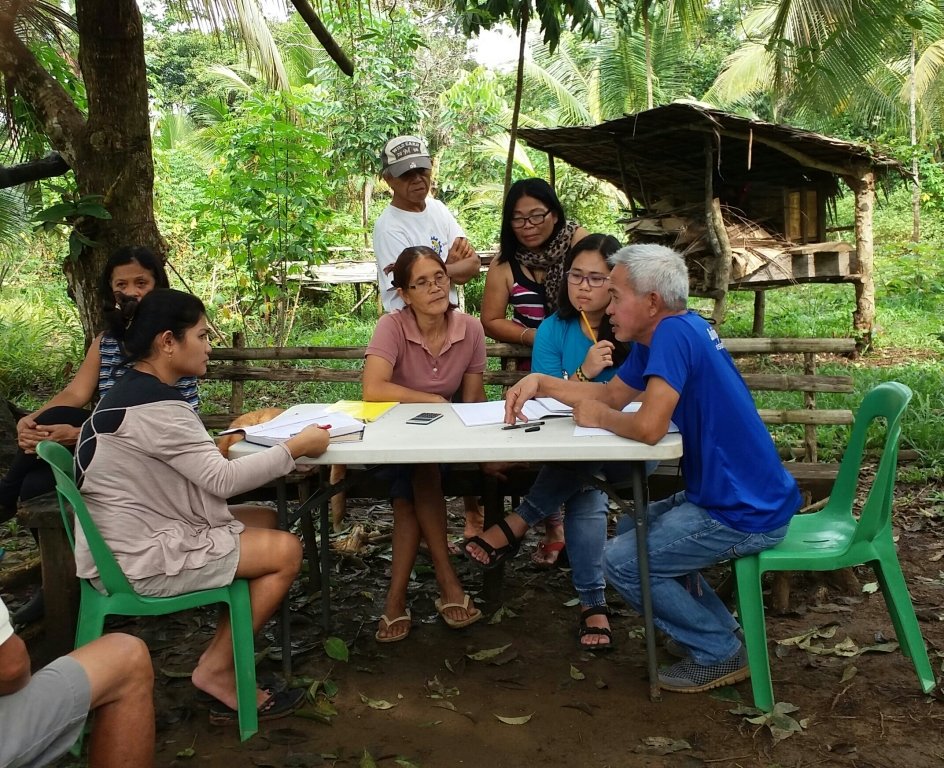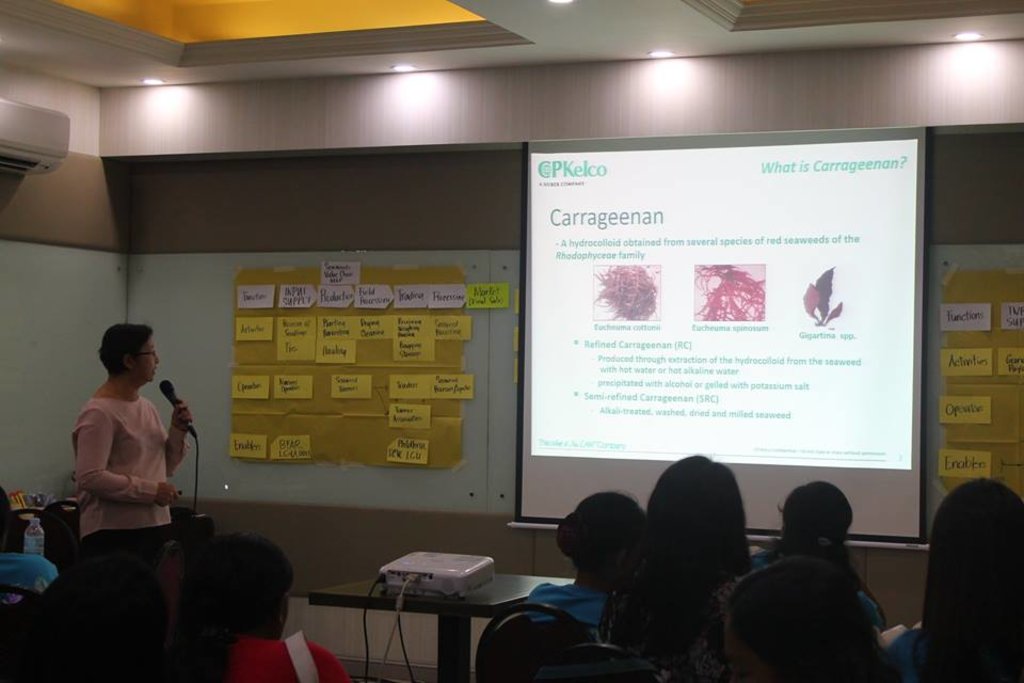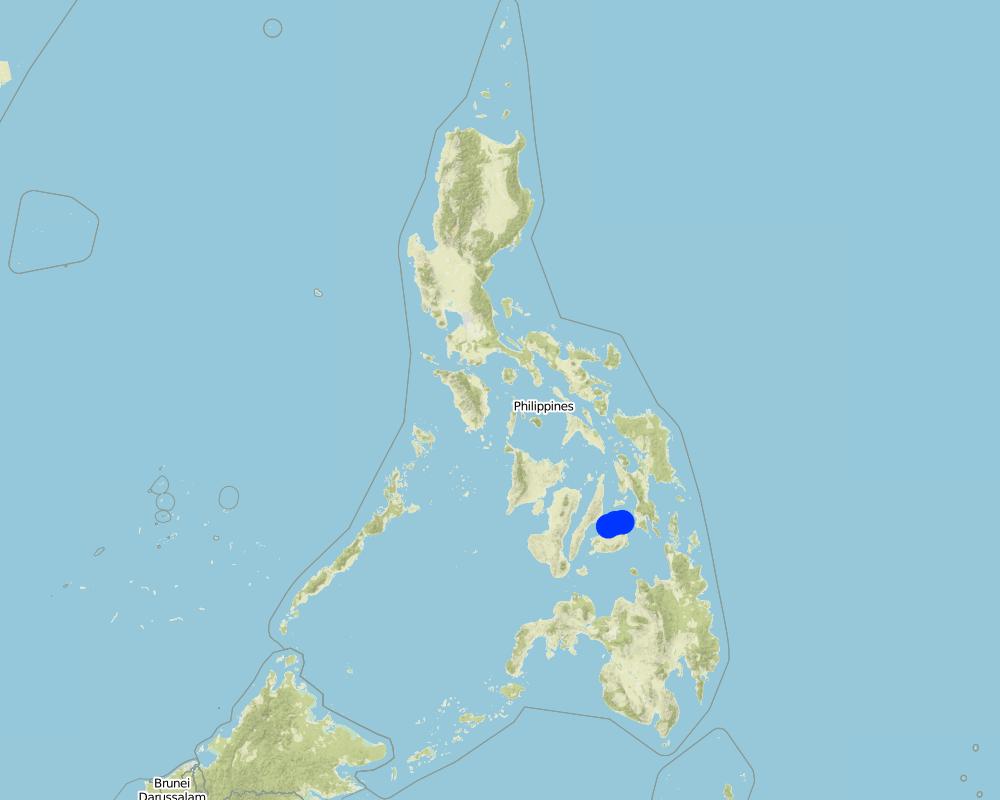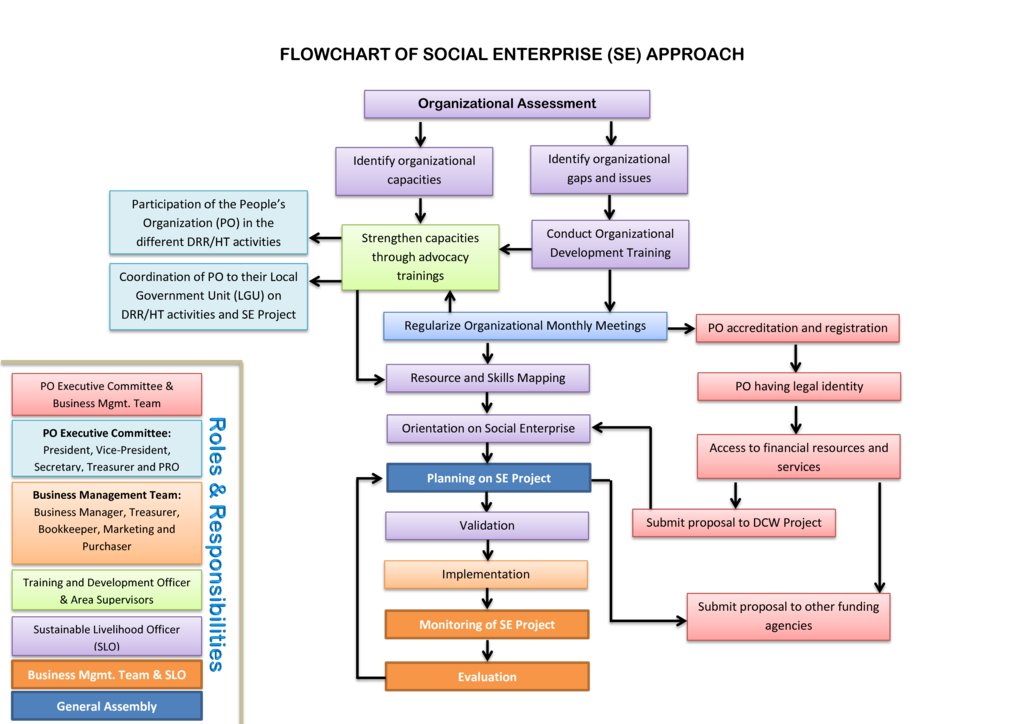Social Enterprise (SE) [Philippines]
- Creation:
- Update:
- Compiler: Keeshia Lynn Marie Austria
- Editor: –
- Reviewer: Alexandra Gavilano
Katilingbanong Patigayon
approaches_3119 - Philippines
View sections
Expand all Collapse all1. General information
1.2 Contact details of resource persons and institutions involved in the assessment and documentation of the Approach
Key resource person(s)
Sustainable Livelihood Officer (SLO):
Philippines
Name of project which facilitated the documentation/ evaluation of the Approach (if relevant)
Danajon Communities WATCH ( DCW)Name of the institution(s) which facilitated the documentation/ evaluation of the Approach (if relevant)
Philippine Partnership for the Development of Human Resoruces in Rural Areasy (PhilDHRRA) - Philippines1.3 Conditions regarding the use of data documented through WOCAT
When were the data compiled (in the field)?
04/04/2017
The compiler and key resource person(s) accept the conditions regarding the use of data documented through WOCAT:
Yes
1.4 Reference(s) to Questionnaire(s) on SLM Technologies
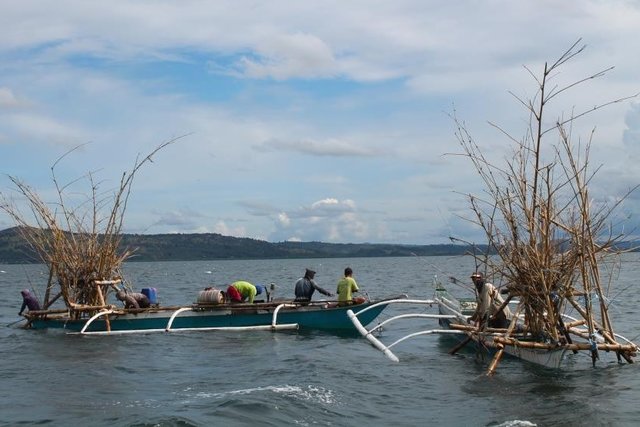
Artificial Reef [Philippines]
Artificial Reef is a fish aggregating device that is considered as a sustainable alternative in the islands of Bohol. This technology can withstand the effects of gale warning, typhoons and extreme heat.
- Compiler: Keeshia Lynn Marie Austria
2. Description of the SLM Approach
2.1 Short description of the Approach
Social Enterprise (SE) aimed to provide social protection among its members and generate additional family income. Above all, this approach will encourage the conservation, preservation and protection of the resources available in the community.
2.2 Detailed description of the Approach
Detailed description of the Approach:
Social Enterprise (SE) materialized because of the experiential processes conducted by the Sustainable Livelihood Officer. According to him, livelihood intervention should achieve the advocacy of the project, at the same time, relevant and suitable to the people living in the island and coastal communities. SE Approach was a result of the focus group discussions conducted in the community and livelihood consultations of the different stakeholders in the barangay level. According to the Local Government Code of the Philippines, Book III, Section 386 (a), A Barangay maybe created out of a contiguous territory which has a population of at least two thousand (2,000) inhabitants as certified by the National Statistics Office. Furthermore, Section 386 states that barangay is the basic political unit. It serves as the primary planning and implementing unit of government policies, plans, programs, projects, and
activities in the community, and as a forum wherein the collective views of the people may be expressed, crystallized and considered, and where disputes may be amicably settled.
Social Enterprise Project was determined using the following methods: resource mapping, identification of social enterprise project, planning and preparation which includes community equity fund, implementation, maintenance and monitoring, lastly, expansion and/or diversification of the implemented project. Once the enterprise is established, the organization will elect the members of their business management team. This is different from the set of officers typically present in every organization because business management team will focus on the business engagements only. The business management team is headed by the business manger, who will report directly to the president of the organization. The members of the team includes the following: treasurer, bookkeeper, purchaser and marketing team (if needed by the enterprise project).
The management team will receive 20% of the net income. Afterwards, the remaining net income will be divided according to the following percentage: 10% for disaster fund allocation, 10-20% for additional capital, and the remaining amount is allocated for individual member share. SE does not only focus on net profit but also the welfare of the community, its resources and social protection among its members. Social protection specifically means having disaster fund allocation per organization which is derived from the net income of the enterprise. This fund can be utilized by the organization before or after the onset of a disaster, depending on their agreed utilization guidelines. The sustainability components are the following: allocation for additional capital, depreciation cost for every equipment and experiential mentoring of the Livelihood Officer.
Based from the baseline study of DCW Project, Human Trafficking cases increased after a disaster. DCW project aimed to build resilient communities in order to combat Human Trafficking, however, conducting awareness sessions, coordination meetings with the local government unit and establishing HT referral system is not enough to prevent Human Trafficking. On the second year of the project, the project management team realized that livelihood component is the missing link in fighting against Human Trafficking. The body agreed that sustainable livelihood project means being adaptable and resilient to climate change. For the livelihood officer, group enterprise is an important mechanism in promoting adaptable and resilient livelihood project. This approach was granted to the People's Organization (PO) in the barangays who were organized or adopted by DCW project.
Due to the awareness sessions conducted, the organizations were motivated to join the advocacy activities like coastal clean-up and mangrove planting. They were also invited to join forums on the Solid Waste Management (SWM), referral pathway on Human Trafficking (HT) and awareness training on the causes and effects of Climate Change and sea level rise, since they are living in the island and coastal barangays. PO organizations serve as community partners of DCW project in facilitating learning sessions in the different barangays. Furthermore, DCW project provided inputs how to make their enterprise resilient and sustainable by being adaptive to the changing weather especially those organizations living in the island barangays.
2.3 Photos of the Approach
2.5 Country/ region/ locations where the Approach has been applied
Country:
Philippines
Region/ State/ Province:
Province of Bohol
Map
×2.6 Dates of initiation and termination of the Approach
Indicate year of initiation:
2016
If precise year is not known, indicate approximate date when the Approach was initiated:
less than 10 years ago (recently)
Comments:
The Social Enterprise project of the different organizations are currently ongoing.
2.7 Type of Approach
- project/ programme based
2.8 Main aims/ objectives of the Approach
Social Enterprise (SE) aimed to provide social protection among its members and generate additional family income. Above all, this approach will encourage the conservation, preservation and protection of the resources available in the community.
2.9 Conditions enabling or hindering implementation of the Technology/ Technologies applied under the Approach
social/ cultural/ religious norms and values
- enabling
Membership of the organization encouraged multi stakeholder participation.
availability/ access to financial resources and services
- enabling
The People's Organization (PO) can easily access financial resources and services if they were already established and registered by the different government agencies. One of the determinants of the capability of the PO is having annual financial statement, minutes of the organizational meetings and resolutions made by the organization.
- hindering
Having a weak or inactive People's Organization. If the PO does not comply the necessary requirements of the different government agencies and inactive in the different organizational activities, then, they will have difficulty in accessing funds.
institutional setting
- enabling
It will facilitate to address the needs of the organization like capacity building, technical assistance and financial support.
- hindering
The bureaucratic procedures and priorities of every institution.
collaboration/ coordination of actors
- enabling
It will make the decision-making process participatory and according to the needs of the majority.
legal framework (land tenure, land and water use rights)
- enabling
This approach specifically refers to Coastal Resource Management (CRM). The project implementer, People's Organization (PO) and the CRM officer already had partnership. Moreover, the PO representative is one of the members of CRM council to ensure legal identity of the Social Enterprise projects.
policies
- enabling
It will give directions and set the standards of the organization.
- hindering
If the policies mandated were not agreed by the majority.
markets (to purchase inputs, sell products) and prices
- enabling
The People's Organization (PO) already established linkage to the different markets.
- hindering
The quality of product expected by the buyers is not met by the People's Organization.
workload, availability of manpower
- enabling
DCW Project provided Social Enterprise (SE) guidelines for business operation, financial management and monitoring of enterprise.
3. Participation and roles of stakeholders involved
3.1 Stakeholders involved in the Approach and their roles
- community-based organizations
People's Organization
The implementer and beneficiary of the project.
- SLM specialists/ agricultural advisers
Sustainable Livelihood Officer: Male, 59 years old
Facilitates the implementation of the SE projects and provides technical assistance to the PO and project staff.
- local government
Municipal and barangay local government unit
Support system through legislation and resolution that adheres the needs of the PO.
3.2 Involvement of local land users/ local communities in the different phases of the Approach
| Involvement of local land users/ local communities | Specify who was involved and describe activities | |
|---|---|---|
| initiation/ motivation | interactive | PO members, Sustainable Livelihood Officer, Field Officers, Area Supervisors and representative of the barangay council. Activity: FGD, resource mapping, consultations and assessment of the organizations capability in handling social enterprise project. |
| planning | interactive | PO members, Sustainable Livelihood Officer, Field Officers, Area Supervisors and representative of the barangay council |
| implementation | self-mobilization | PO members, Sustainable Livelihood Officer, Field Officers and Area Supervisors |
| monitoring/ evaluation | self-mobilization | PO members, Sustainable Livelihood Officer and Field Officers |
3.3 Flow chart (if available)
Description:
Capacity building on Disaster Risk Reduction (DRR) and Human Trafficking (HT) is integrated in this approach so that PO members will have greater appreciation on the preservation, conservation and protection goal of SE approach. The Sustainable Livelihood Officer (SLO) served as facilitator and guide of the PO in strengthening their organization and implementing their enterprise. He will also provide technical assistance, conduct coaching and mentoring sessions within the project term. Frequency of monitoring will depend on the nature of their SE project.
Author:
Guillermo P. Bagacay
3.4 Decision-making on the selection of SLM Technology/ Technologies
Specify who decided on the selection of the Technology/ Technologies to be implemented:
- all relevant actors, as part of a participatory approach
Explain:
Focus Group Discussion (FGD) and livelihood consultations in the barangay level were conducted by the livelihood officer in order to achieve a feasible and suitable Social Enterprise project specific for their community. After leveling off and the exchange of ideas based from their previous experience vis-a-vi the current trend of the weather patterns and climate change, the organization finally arrived to a conclusion and implement their desired social enterprise project.
Specify on what basis decisions were made:
- personal experience and opinions (undocumented)
4. Technical support, capacity building, and knowledge management
4.1 Capacity building/ training
Was training provided to land users/ other stakeholders?
Yes
Specify who was trained:
- land users
Form of training:
- demonstration areas
Form of training:
- On-site coaching and mentoring
Subjects covered:
1) Technical Assistance in drafting proposals and lobbying
2) Financial Recording and Bookkeeping
3) Value Chain Analysis
4) Enterprise Development
5) Occupational Health and Health Standards
4.2 Advisory service
Do land users have access to an advisory service?
Yes
Specify whether advisory service is provided:
- on land users' fields
4.3 Institution strengthening (organizational development)
Have institutions been established or strengthened through the Approach?
- yes, moderately
Specify the level(s) at which institutions have been strengthened or established:
- local
Describe institution, roles and responsibilities, members, etc.
Some of the members of the organization are capacitated to become local champions. Local champions means they have the ability to facilitate learning sessions, actively involved in organizational activities and empowered enough to link and lobby with the different line agencies. While the leaders of the organization are trained to manage their organizations and social enterprise.
Specify type of support:
- financial
- capacity building/ training
- Seed Capital worth Php30,000
4.4 Monitoring and evaluation
Is monitoring and evaluation part of the Approach?
Yes
If yes, is this documentation intended to be used for monitoring and evaluation?
No
4.5 Research
Was research part of the Approach?
No
5. Financing and external material support
5.1 Annual budget for the SLM component of the Approach
If precise annual budget is not known, indicate range:
- 2,000-10,000
Comments (e.g. main sources of funding/ major donors):
DCW Project is funded by Caritas Switzerland and JTIF
5.2 Financial/ material support provided to land users
Did land users receive financial/ material support for implementing the Technology/ Technologies?
No
5.3 Subsidies for specific inputs (including labour)
- none
If labour by land users was a substantial input, was it:
- voluntary
5.4 Credit
Was credit provided under the Approach for SLM activities?
No
5.5 Other incentives or instruments
Were other incentives or instruments used to promote implementation of SLM Technologies?
No
6. Impact analysis and concluding statements
6.1 Impacts of the Approach
Did the Approach empower local land users, improve stakeholder participation?
- No
- Yes, little
- Yes, moderately
- Yes, greatly
SE approach integrates the lesson learned from their experience during Typhoon Haiyan and Bohol earthquake and sustainability measures of the community. This approach is localized to ensure that the project is suitable and adaptable to their respective communities.
Did the Approach enable evidence-based decision-making?
- No
- Yes, little
- Yes, moderately
- Yes, greatly
Yes because the planning process was represented by the different stakeholders in the barangay.
Did the Approach help land users to implement and maintain SLM Technologies?
- No
- Yes, little
- Yes, moderately
- Yes, greatly
Yes because the approach serves as guide from planning to implementation and monitoring of the project.
Did the Approach improve knowledge and capacities of land users to implement SLM?
- No
- Yes, little
- Yes, moderately
- Yes, greatly
Yes because the PO members are now financial literate and underwent series of financial coaching and mentoring sessions.
Did the Approach empower socially and economically disadvantaged groups?
- No
- Yes, little
- Yes, moderately
- Yes, greatly
Yes because the women, senior citizens and persons with disability are members of the organization.
Did the Approach improve gender equality and empower women and girls?
- No
- Yes, little
- Yes, moderately
- Yes, greatly
Yes because every member has their shared efforts.
trainings provided and linkage to different government agencies
Did the Approach improve the capacity of the land users to adapt to climate changes/ extremes and mitigate climate related disasters?
- No
- Yes, little
- Yes, moderately
- Yes, greatly
It is because the goal of the approach is to establish sustainable social enterprise that can adapt to climate change especially that they are living in the island and coastal barangays of Bohol, Philippines.
Did the Approach lead to employment, income opportunities?
- No
- Yes, little
- Yes, moderately
- Yes, greatly
Resource-based projects needs additional manpower during harvest.
6.2 Main motivation of land users to implement SLM
- increased production
Establish resilient and suitable enterprise in their respective communities.
- reduced risk of disasters
By means of allocating disaster funds and adaptability measures of the enterprise as part of its sustainability plan.
- enhanced SLM knowledge and skills
This is a livelihood approach that does not just focus on profit but also on social awareness and climate change adaptation.
6.3 Sustainability of Approach activities
Can the land users sustain what has been implemented through the Approach (without external support)?
- uncertain
If no or uncertain, specify and comment:
Because the dynamics within the organization is a vital factor in sustainability. The role of a second liner of the key positions and business management team is crucial as well since they are involve in the technical support and business processes.
6.4 Strengths/ advantages of the Approach
| Strengths/ advantages/ opportunities in the land user’s view |
|---|
| This is not an individualistic approach but a group effort in order to revive the "bayanihan" spirit (spirit of communal unity, work and cooperation to achieve a particular goal) and social awareness. |
| The People's Organization (PO) members underwent training like financial management, Value Chain Analysis (VCA), Occupational Safety and Health Standards (OSHS). What made this approach different from their previous livelihood projects is that, the PO were guided from planning to implementation and monitored on a monthly basis to ensure the continuity of their business engagement. Also, there were mentoring and coaching sessions provided by the livelihood officer and consultant on financial recording and bookkeeping. |
| The PO learned that it is not only about the quality of output, rather, the quality starting from its source to production and marketing. Moreover, its impact on their environment and community. |
| Strengths/ advantages/ opportunities in the compiler’s or other key resource person’s view |
|---|
| This approach will not only focus on profit but also on environmental protection, conservation and preservation. |
| Increase fish production because it will lessen the pressure of their usual fishing ground and minimize over fishing. |
| Alternative source of income to the fishers especially if there's gale warning and typhoons. |
6.5 Weaknesses/ disadvantages of the Approach and ways of overcoming them
| Weaknesses/ disadvantages/ risks in the land user’s view | How can they be overcome? |
|---|---|
| Turn over of Business Management Team especially the bookkeeper position because it is time demanding and keen on details. |
Choose a bookkeeper that is willing enough to follow through the records and no problem on his/her eye sight. Encourage and train second liner on the key positions. Provide honorarium to the business management team. |
| Security of tenure (land/sea) of their project site or production building. |
To enter a Memoramdum of Agreement (MOA) between the local government units. Lobbying in the local government unit to pass a resolution allowing the PO to use the land/sea as project site or production building. |
| Sustainability of the project even after DCW. |
The project holder will enter a Memorandum of Agreement (MOA) between the local government unit as partners of the community in sustaining their project. Provided technical skills training to the PO so that they can mange their enterprise even after DCW project. Ensure registration and accreditation of the POs in the different committees of the local government unit and different government agencies. |
| Weaknesses/ disadvantages/ risks in the compiler’s or other key resource person’s view | How can they be overcome? |
|---|---|
| 2 years and 9 months is not enough to mold a strong and dynamic community-based social enterprise. | Linkage to the Local Government Unit (LGU) and the different line agencies like Department of Trade and Industries (DTI), Bureau of Fisheries and Aquatic Resources (BFAR) and Department of Science and Technology (DOST). |
| Upgrading of the People's Organization (PO) knowledge on production technology, marketing and product packaging. | Linkage to the different line agencies like Department of Trade and Industries (DTI), Bureau of Fisheries and Aquatic Resources (BFAR) and Department of Science and Technology (DOST) because they have the expertise to support the needs of the PO. For example, DTI for marketing and linkage and DOST for product development. |
| Capacity to access funds from the different line agencies and fund donors. | Train the PO to conceptualize a project based from their needs, write project proposals and submit it to the concern agencies for funding. |
7. References and links
7.1 Methods/ sources of information
- field visits, field surveys
along with monthly monitoring visits and Occupational Safety and Health Standards (OSHS)
- interviews with land users
two respondent per organization
Links and modules
Expand all Collapse allLinks

Artificial Reef [Philippines]
Artificial Reef is a fish aggregating device that is considered as a sustainable alternative in the islands of Bohol. This technology can withstand the effects of gale warning, typhoons and extreme heat.
- Compiler: Keeshia Lynn Marie Austria
Modules
No modules


